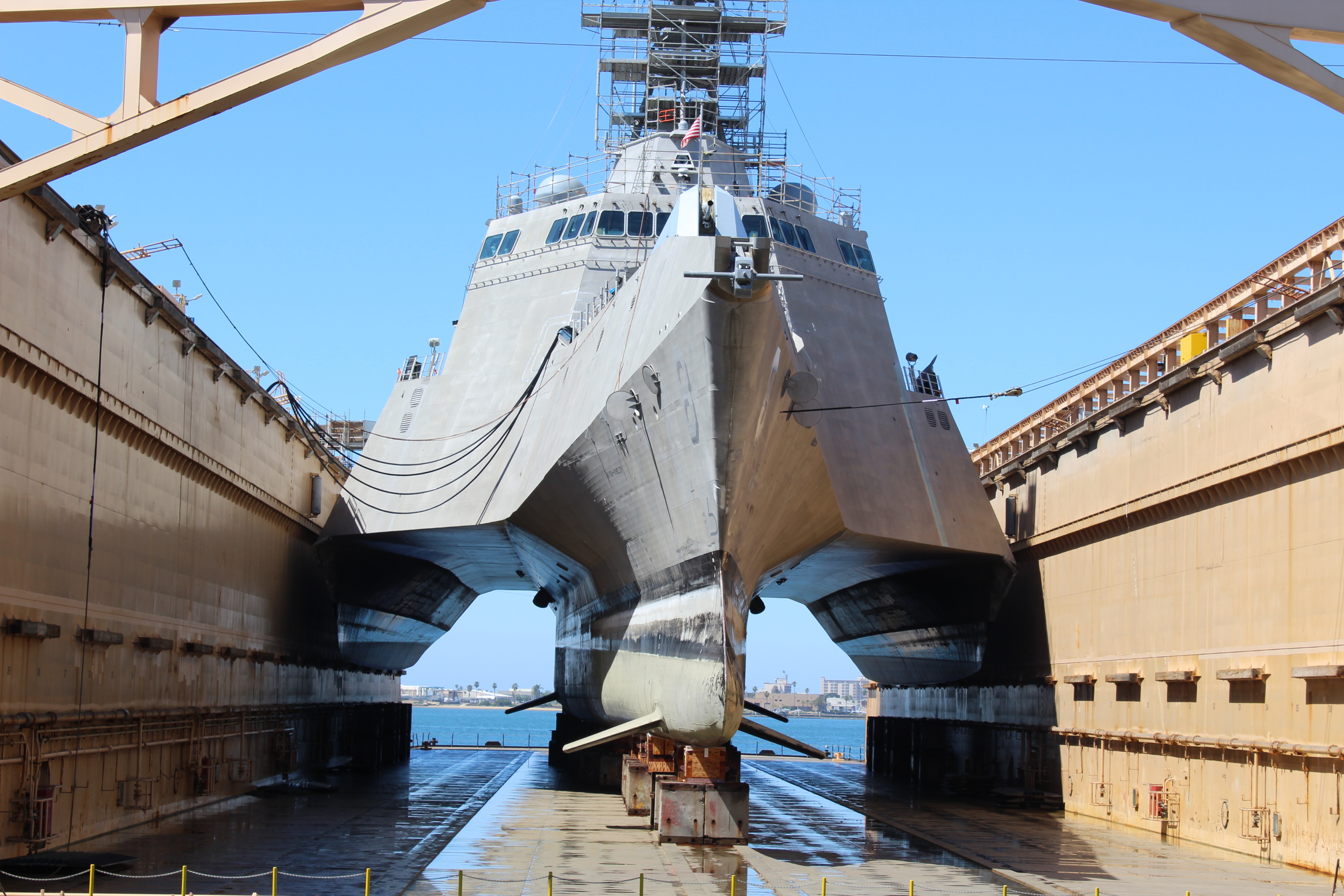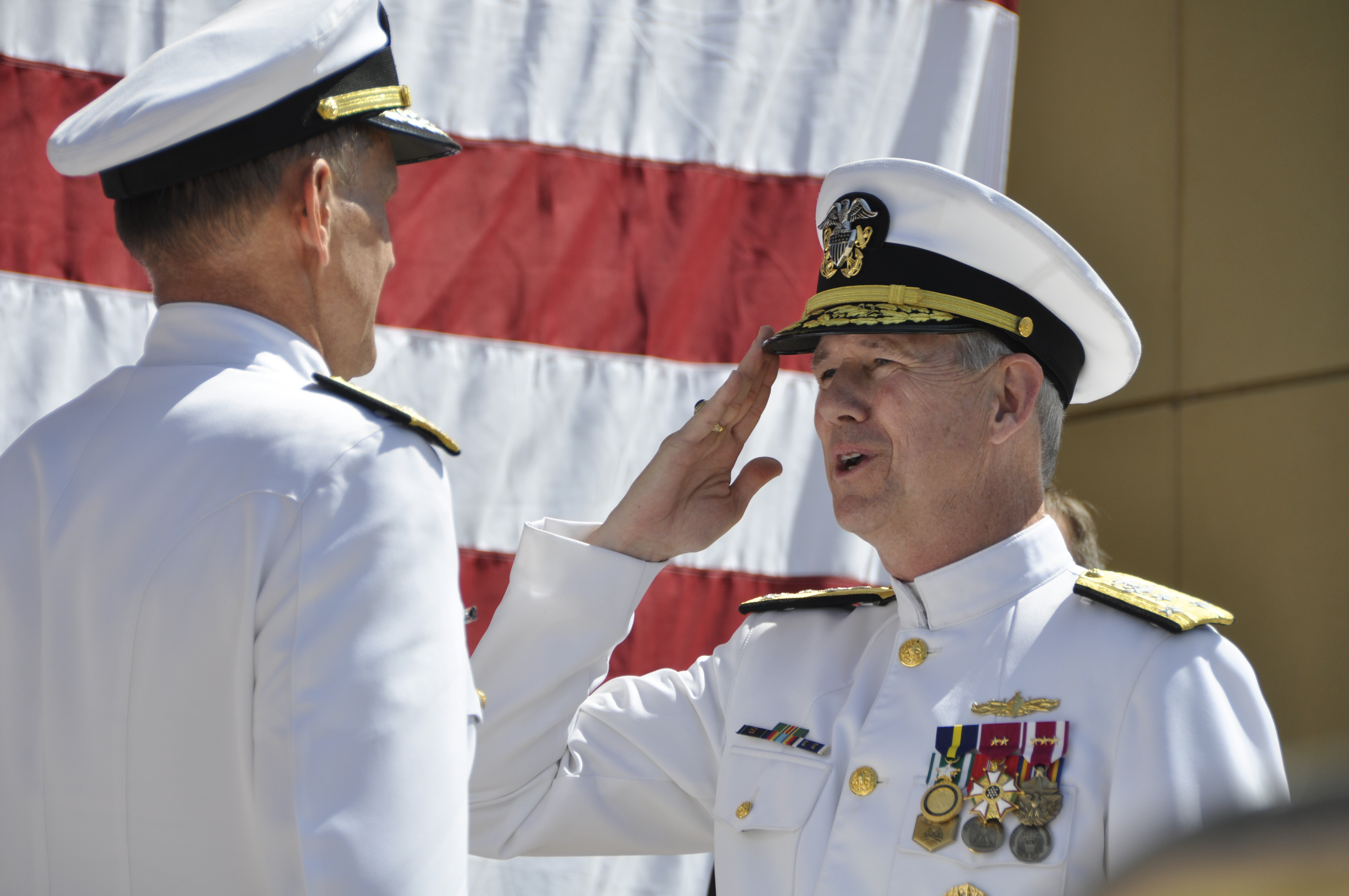
The Navy could reach a 355-ship fleet 10 to 15 years faster than current plans allow if it extended the service life of today’s surface ships by five or 10 years each, effectively cutting in half the time it would take to complete the fleet buildup, the commander of Naval Sea Systems Command said today.
Vice Adm. Tom Moore called the plan “extremely low risk” and said most, if not all, steel-hulled ships could remain in service for 30 to 35 years or more instead of the planned 25 years for a relatively low cost.
“We’re taking a pretty close look at what it would take to get them out another five, another 10 years. And the reality is, for a steel hull, if you do the maintenance, you can get its service life out much longer,” he said at an event co-hosted by the Center for Strategic and International Studies and the U.S. Naval Institute.
“I think there’s great opportunity to make the investments, a relatively small investment, to keep the ships around longer than we have today. And people will say, well we’ve never really gotten a surface ship past 35 or 40 years, and I will point out all the time that we routinely take aircraft carriers to 50 years. And the reason we do that is because we consistently do all the maintenance you have to do on an aircraft carrier to get it to 50 years. So we know how to do this, and I think what you’ll see is we’re going to take a very serious look at taking the existing service life of the fleet and extending it out five or 10 years. If you do that – and you’ve seen some of the force structure assessments that get us to 355 ships around 2045 if we just keep ships at their current service life and then build new – we can probably accelerate that to get to 355 by about 10 to 15 years (faster) for a relatively small investment over about a 30-year period. So we’re going to take a very close look at that.”
Moore told reporters after the event that he was confident cruisers, destroyers, amphibious ships, Freedom-variant Littoral Combat Ships and even logistics ships could be kept for 30 to 35 years with proper maintenance – though he noted he was less confident about the aluminum-hulled Independence-variant LCSs made by Austal USA.
“I don’t want to presuppose a decision” on the Austal LCSs, he said.
“We don’t have the knowledge base on how that hull performs over along period of time like we do with steel, with steel hulls. What happens over 25 years? Aluminum doesn’t quite have the tensile strength, so you’ll have a little bit more flexibility in the hull. We’ve seen this with some of the cracking in the (cruiser) superstructures. … We’ll proceed a little bit more cautiously on extending the service life of aluminum ships than we will steel-hulled ones.”
Moore noted that the authority to extend ship service lives ultimately didn’t lie with NAVSEA, and that top Navy leadership would have to make the financial investment in the additional dollars to keep today’s fleet for longer, but “from the technical side of the house NAVSEA doesn’t see anything technically that would prohibit us from extending the service life of the ships.”
The NAVSEA commander added that longer service lives needed to be a priority going forward, and that upcoming ship classes such as the frigate and the future surface combatant ought to be designed with 40 or more years of service life in mind.

This ability to get to 355 ships – the number identified not only by the Trump Administration as a goal but by numerous Navy and Navy-commissioned studies as the requirement to meet global threats – in a quicker timeline could have great significance for operational fleet commanders, who are already struggling to keep up with more and more sophisticated threats around the globe. House Armed Services seapower and projection forces subcommittee chairman Rep. Rob Wittman (R-Va.) told USNI News that the Navy could reasonably expect to reach 355 ships in 25 to 30 years, given the industrial base’s capability to ramp up new ship construction. Moore’s comments suggest this timeline could be cut in half if the Navy could find the money to keep today’s ships around longer – for the daily operations and maintenance, for the pier-side ship availabilities and for the personnel to man the ships.
Moore said the ships could likely stay in service until they’d require another drydocking availability, at which point the expense might outweigh the operational usefulness. In many cases, though, waiting until the next drydocking availability would provide more than five years of additional service life. The primary cost would be diligently funding maintenance requirements throughout the ship’s life and keeping up to date with the newest combat system baselines and computer upgrades to keep the ships combat-relevant.
Moore praised the 2018 budget request for prioritizing operations and maintenance funding to improve fleet readiness, and even though the budget request doesn’t do much to lay the groundwork for a fleet-buildup from a new-construction perspective, he said, “we’ve got the resources that we need (in readiness), we’ve got a firm strategy going forward. We’ll start delivering ships and submarines on time. We’ll take very serious look at how we extend the expected service life of the ships we have, and that will also be part of our maintenance strategy. I think when you combine those two things together, and add that into the build strategy we’re going to have, that we’ve got a viable path moving forward to get to 355, and we may in fact be able to get there sooner than we would otherwise get there by just building new.”





